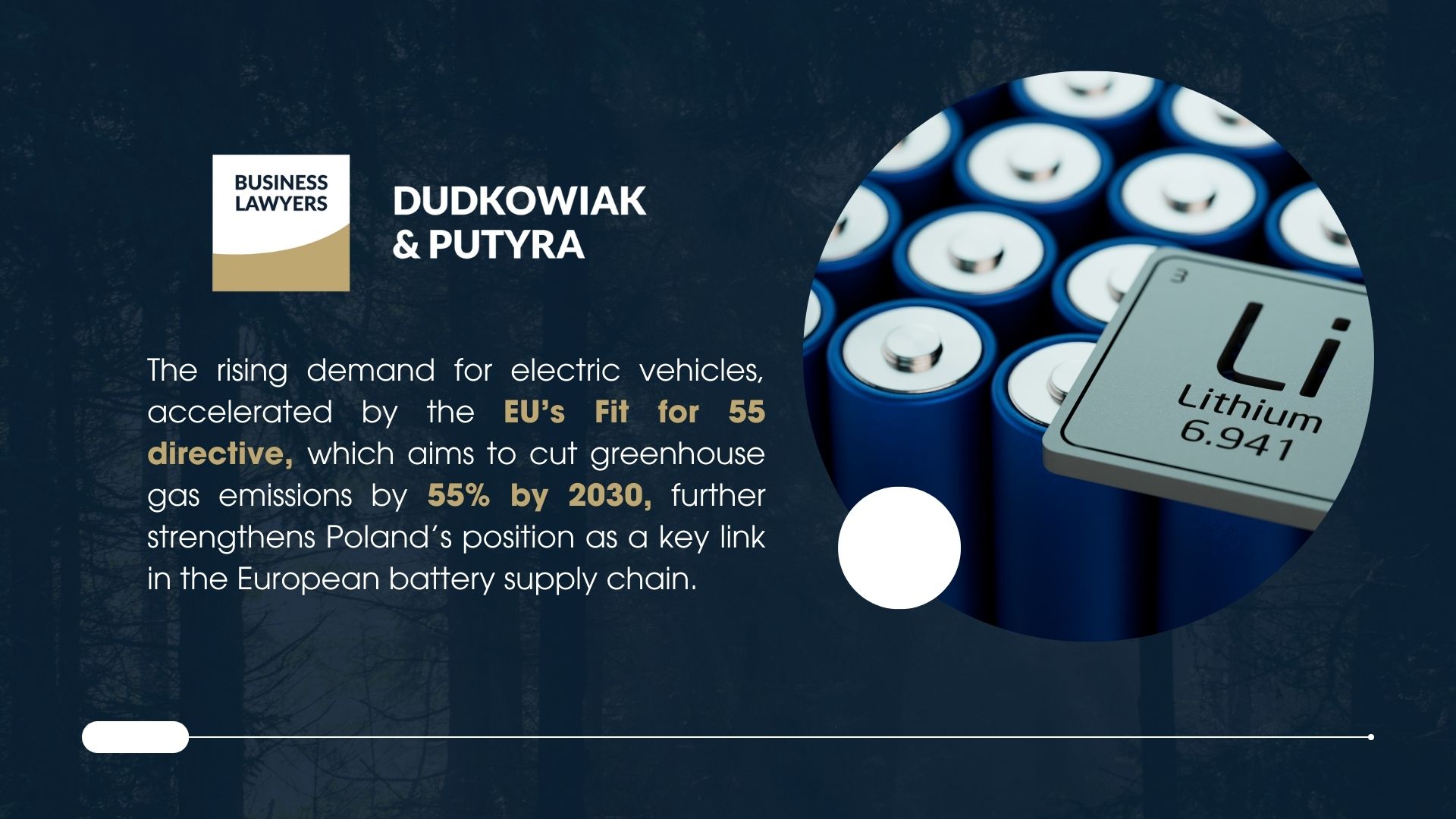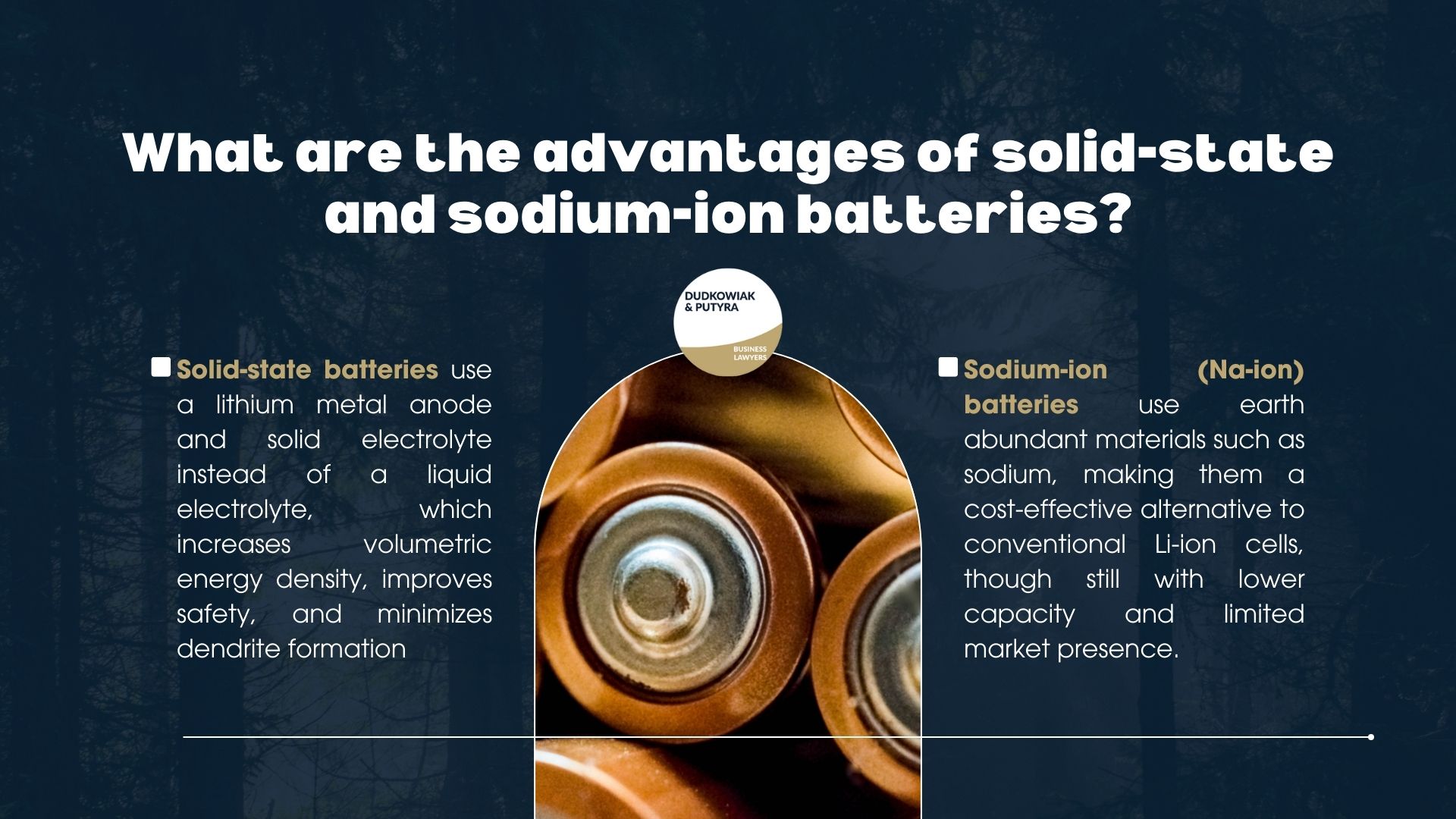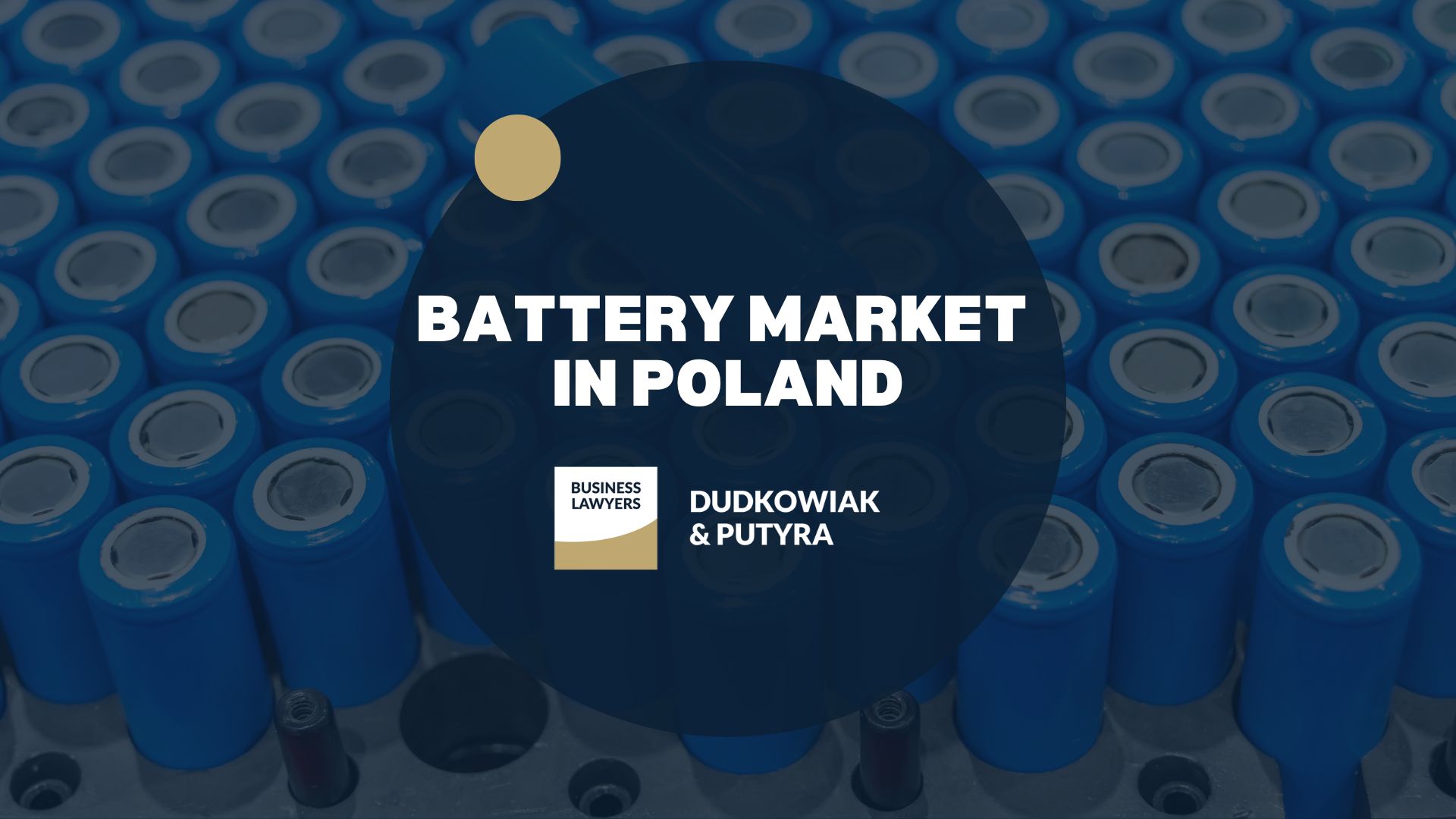Last updated: 29.09.2025
Poland’s Role in the Global Battery Supply Chain
Poland has become one of the leading players in the global battery industry. Lithium-ion batteries already account for more than 2.4% of all Polish exports and contribute around 3% to the country’s GDP.

This makes the sector one of the key pillars of the national economy and a strategic driver of European electromobility.
A central role is played by the LG Energy Solution plant near Wroclaw, the largest lithium-ion battery factory in Europe and one of the largest worldwide. With a current annual capacity of 86 GWh – expected to rise to 115 GWh in the coming years – the facility supplies global automotive leaders such as Audi, BMW, Ford, and Volkswagen.
The rising demand for electric vehicles, accelerated by the EU’s Fit for 55 directive, which aims to cut greenhouse gas emissions by 55% by 2030, further strengthens Poland’s position as a key link in the European battery supply chain.

As a result, Poland not only meets EU market needs but also contributes to Europe’s independence from Asian imports, particularly from China.
Types of batteries and their characteristics
| Type | Advantages | Disadvantages | Use |
| Lithium-ion batteries |
|
|
|
| Lithium-iron-phosphate batteries |
|
|
|
| Solid-electrolyte batteries |
|
|
|
| Sodium-ion (Na-ion) batteries (emerging) |
|
|
|
| Solid-state batteries (future technology) |
|
|
|
Future of the Polish Battery Industry – Innovation, Recycling, and EU Regulations
The transformation of the automotive sector is driven by EU regulations, including the Fit for 55 package, which aims to reduce CO₂ emissions by 55% by 2030. This means a sharp increase in global demand for accumulators. Estimates indicate that global demand for lithium-ion batteries in EVs will reach 1,525 GWh by 2030, with production increasing more than tenfold during that time.
At the same time, technological developments are driving investment in recycling. The new EU Battery Directive (2023) introduces extended producer responsibility and uniform waste management rules. This is not only a way to protect the environment, but also a source of secondary raw materials for the further production of cathodes, anodes, and electrodes.
FAQ – Battery Market in Poland
What types of batteries are most commonly used in electric vehicles?
The most widely used are lithium-ion batteries (Li-ion), as they offer high energy efficiency, long cycle life, and the best balance between power density and battery performance. They are the standard rechargeable batteries in modern EVs, as well as in consumer electronics such as cell phones and laptops.
How do lithium-ion batteries compare to lead-acid batteries?
While lead acid batteries are cheaper and widely available, they have lower capacity, shorter battery life, and higher weight. In contrast, lithium ion cells deliver higher specific energy (Wh/kg), longer cycle life, and much better battery performance. This makes them the preferred battery pack for electric vehicles and consumer electronics.
What are the advantages of solid-state and sodium-ion batteries?
Solid-state batteries use a lithium metal anode and solid electrolyte instead of a liquid electrolyte, which increases volumetric energy density, improves safety, and minimizes dendrite formation. Sodium-ion (Na-ion) batteries use earth abundant materials such as sodium, making them a cost-effective alternative to conventional Li-ion cells, though still with lower capacity and limited market presence.

How does temperature affect battery performance?
At elevated temperatures, lithium-ion batteries are more prone to degradation mechanisms and capacity loss. Operating at high or low temperatures can reduce cycle life and accelerate discharged state instability. Modern battery design and advanced anode materials such as silicon anodes or graphite anodes help mitigate these effects, ensuring stable battery performance.
What makes a modern Li-ion battery different from earlier designs?
A modern Li-ion battery integrates advanced cathode materials such as lithium cobalt oxide or combinations with nickel metal hydride components. It uses pouch cells or cylindrical designs, offers high voltage output, and achieves higher battery life with reduced degradation mechanisms.
How do lithium atoms and positively charged lithium ions influence performance?
In every lithium ion cell, energy storage is based on the movement of positively charged lithium ions between anode and cathode. The role of lithium atoms, graphite anodes, and silicon based anodes is critical for managing electrical charge and electric current.



